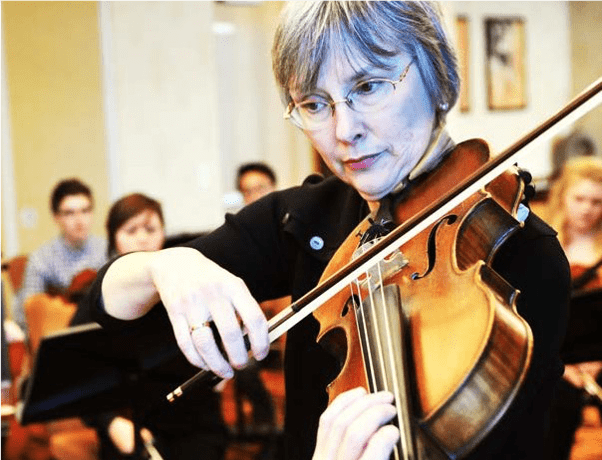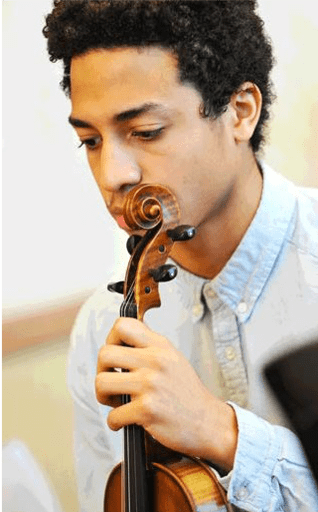By Kirk Moss
The assessment practices of school orchestra directors and string teachers have received very little attention in educational research literature. Recently, I had the opportunity to collaborate with two colleagues, Dr. Stephen Benham and Dr. Kristen Pellegrino, to co-author a book chapter on the topic. Our chapter appears in The Oxford Handbook of Assessment Policy and Practice in Music Education, Volume 2. Illuminating this topic and developing a baseline set of data that future researchers may use in their own analyses of assessment practice offered a worthy goal, and I hope you find this brief summary of our findings helpful to your teaching.
After discovering a small body of literature on the assessment practices of school orchestra directors and string teachers, our attention quickly shifted to conducting original research. First, we carried out a descriptive survey study to provide a sense of teacher priorities and frequency of assessment practice and types of assessment, using the eleven curricular categories identified in the ASTA String Curriculum as the basis of examples of what string teachers might assess.
We distributed the survey to more than 2,000 individuals who self-identified as K–12 string/orchestra teachers from ASTA’s membership list. We received over 400 responses, for a response rate of 20%. Survey participants were asked to select which grade levels they currently teach, and our findings indicated that many participants teach at more than one level: 47% teach elementary school, 67% teach middle or junior high school, and 53% teach high school. Further, respondents indicated how many years they had taught music in public or private schools, and the data seemed to represent assessment practice among teachers with a wide range of experiences. Two primary survey questions were developed from the curricular areas identified in the ASTA String Curriculum. The first question focused on forms of assessment used by teachers, and the next question focused on the frequency they assess each curricular area.
Performance-based assessments were, by far, the most frequently used form of formal assessment in the classroom to evaluate technique, musicianship skills, creative musicianship, and ensemble skills. Music literacy was nearly equally split between performance-based and written assessments, while evaluation of music and musical performances and historical and cultural elements tended towards written assessments and verbal feedback.
Some teachers did not conduct any assessment at all in every curricular area. Creative musicianship and historical/cultural elements were the top two non-assessed areas, but were still assessed by the vast majority of teachers. The remaining nine curricular areas were all assessed by at least 96% of respondents. Performance assessments and verbal feedback comprise over 70% of all assessments used by teachers.
Discussion points include:
- String teachers/orchestra directors use multiple forms of assessment.
- String teachers/orchestra directors depend heavily on performance-based assessments and verbal feedback.
- Written forms of assessment are used less than 20% of the time and tend almost exclusively towards assessing literacy, historical and cultural knowledge, and evaluation of music and musical performances.
- Creative musicianship, which is still relatively new to the string field, was not evaluated at all by nearly 16% of teachers. On the other hand, the fact that 84% of teachers do assess creative musicianship seems to indicate the topic is valued.
A majority of participants in this study place greater emphasis on executive skills/knowledge and musicianship skills/knowledge. A surprisingly large number of respondents indicated they formally assessed these skills on a daily basis. Further study would be needed to determine what this actually looks like in a classroom or if the question was misunderstood in some way.
Selected comments by survey participants are summarized here. Teachers indicated that:
- Multiple assessments are used for all curricular areas with great frequency;
- Limited instructional time (such as meeting only 1–2 times per week, having rotating classes with other electives, or having lessons before/after school) limit opportunities for formal assessment;
- Informal assessment occurs at every lesson/class/rehearsal, but formal assessment is more challenging to accomplish; and
- They would like to assess more, but feel pressure to prepare for concerts.
Overall, respondents to this survey seemed to place a high priority on assessment. Challenges continue to exist in the administration and record collection of assessment processes, but with additional support (time, resources),teachers could accomplish more.
Based on our findings, we believe:
- Music performance assessment can lead the way for other academic disciplines that seek similar authentic forms of assessment;
- Advances in technology may offer the most hope to assess performance-based individual learning more effectively and efficiently;
- Aligning assessment practices to standards/curricula, such as the ASTA String Curriculum, can assist teachers in making assessment meaningful and relevant;
- When administrators facilitate a system of teacher peer collaboration targeting assessment, and put resources of time and money behind such initiatives, teacher instruction improves, and students will benefit; and
- Teachers must have leeway to make informed choices about assessment to improve student learning. Empowered teachers empower their students to learn.
References
Benham, S. J. (Ed.). (2011). ASTA String Curriculum: Standards, goals and learning sequences for essential skills and knowledge in K–12 string programs. Fairfax, VA: American String Teachers Association.
Moss, K. D., Benham, S. J., & Pellegrino, K. (2019). The assessment practices of American orchestra directors. In T. S.
Brophy (Ed.), Handbook on assessment policy and practice in music education (Vol. 2) (pp. 401–421). New York, NY: Oxford University Press.





